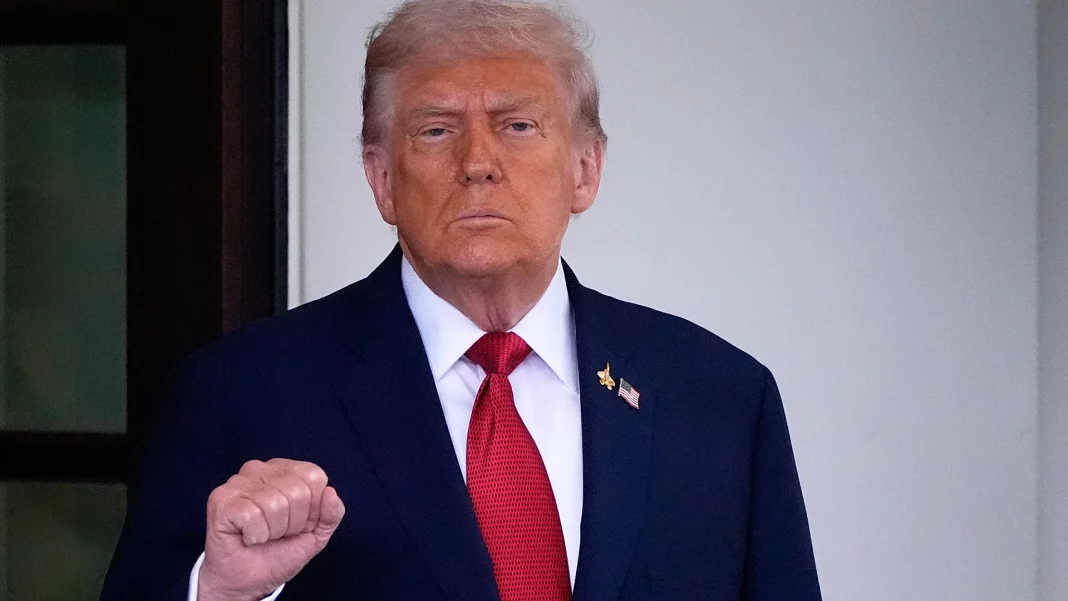Washington, D.C. — September 26, 2025
President Donald Trump has announced a sweeping set of new tariffs set to take effect on October 1, targeting a broad range of imported goods including pharmaceuticals, furniture, and heavy trucks. The move, which Trump claims is aimed at bolstering national security and revitalizing American manufacturing, has sparked widespread concern among economists, business leaders, and healthcare advocates.
In a series of posts on his social media platform, Truth Social, Trump outlined the tariff structure:
- 100% on pharmaceutical drugs
- 50% on kitchen cabinets and bathroom vanities
- 30% on upholstered furniture
- 25% on heavy trucks
The announcement comes without a detailed legal justification, though Trump invoked “national security and other reasons” as his rationale. Legal analysts suggest that the administration is leaning heavily on Section 232 of the Trade Expansion Act of 1962, which allows tariffs for national security purposes. However, it remains unclear whether all of the new tariffs fall under the scope of this law.
A Controversial Move Amid Economic Headwinds
Trump’s announcement arrives at a time of heightened economic uncertainty. Inflation has recently accelerated, and labor markets have begun showing signs of softening. Economists warn that these new tariffs could exacerbate existing challenges by pushing prices higher for both consumers and businesses.
“We have begun to see goods prices showing through into higher inflation,” said Federal Reserve Chair Jerome Powell, noting that rising costs for goods account for “most” or potentially “all” of the increase in inflation this year. Powell has remained cautious about cutting interest rates, citing policy uncertainty—including the potential inflationary impact of new tariffs.
Despite this, Trump has continued to pressure Powell to lower rates, arguing inflation is “no longer a concern.”
Health Sector Alarmed by 100% Drug Tariffs
The most controversial aspect of the tariff package is the 100% import tax on pharmaceutical drugs, a sector where the U.S. is heavily reliant on foreign production. In 2024, the U.S. imported nearly $233 billion in pharmaceutical products, according to Census Bureau data.
Healthcare advocates warn that the tariffs could lead to immediate drug price hikes, worsen insurance burdens, and trigger medicine shortages. “There’s a real risk that patients will begin rationing or even foregoing essential medications,” said Pascal Chan, Vice President for Strategic Policy and Supply Chains at the Canadian Chamber of Commerce.
Trump clarified that the drug tariffs would not apply to companies currently building manufacturing plants in the U.S., though the details remain vague. He did not specify whether exemptions would extend to firms with existing U.S.-based production.
Notably, this policy marks a sharp acceleration from earlier statements. In August, Trump had said he would gradually phase in drug tariffs, starting at a lower rate and increasing over a year or more to 150% or higher.
Furniture, Construction, and Trucking Industries Impacted
The tariff package also targets imports of furniture and cabinetry, industries that are critical to the housing and construction sectors. With high mortgage rates and widespread housing shortages, many prospective homebuyers are already priced out of the market.
The National Association of Realtors noted that while listings have increased by 11.7% compared to last year, new taxes on building materials could drive costs back up.
In the trucking industry, Trump argued that foreign-made heavy trucks and parts are harming domestic manufacturers such as Peterbilt, Kenworth, and Mack Trucks. “These companies will be protected from the onslaught of outside interruptions,” he posted on Truth Social.
Tariffs as Economic Strategy — Or Political Gamble?
Trump has long touted tariffs as a tool to revive American industry and reduce the federal budget deficit. He maintains that companies will respond to the import taxes by shifting production back to U.S. soil—a claim that remains disputed by many economists and trade analysts.
There’s also little evidence that the tariffs are boosting factory jobs. Since April, manufacturing employment has fallen by 42,000, while the construction sector lost 8,000 jobs, according to the Bureau of Labor Statistics.
In a press appearance on Thursday, Trump dismissed concerns about inflation, stating, “There’s no inflation. We’re having unbelievable success.”
Still, he acknowledged that his previous tariffs on China had harmed American farmers, particularly in the soybean sector. He promised to redirect new tariff revenue to compensate agricultural producers, as he did during his first term.
Legal Challenges Loom
Trump’s earlier attempts to impose sweeping tariffs based on national emergency powers under a 1977 law were struck down by multiple federal courts. The Supreme Court is expected to hear arguments on that legal authority in November, which could determine the future scope of executive power on trade.
Until then, businesses and consumers alike are bracing for impact.
Key Takeaways:
- Trump announces new tariffs up to 100%, effective Oct 1.
- Pharmaceutical drugs, furniture, cabinetry, and heavy trucks are targeted.
- National security cited as rationale, though legal basis is unclear.
- Economists warn of inflation risks and economic slowdown.
- Supreme Court to review presidential tariff authority in coming months.



